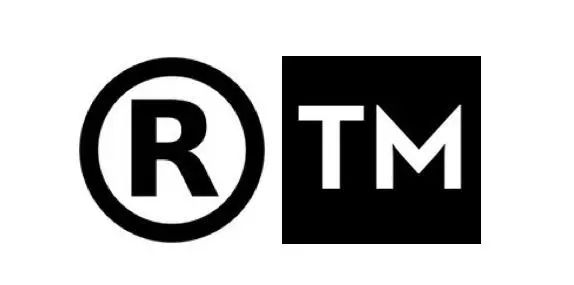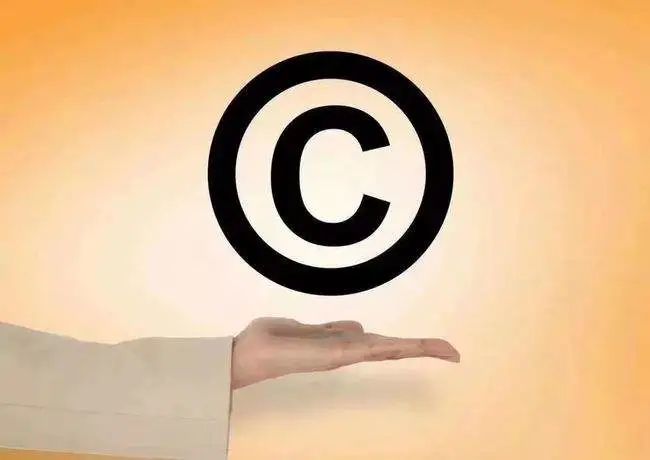World Intellectual Property Day | ""is a network term? Do you know these signs?
""is a network term?
""is a variety show logo?
""is a whitening VC?
In daily life
We can often see these symbols.
But do you know what they represent?




【™】? Internet language?
In fact, what we often see is the abbreviation of "TradeMark", which is the trademark.
Trademarks include registered trademarks and unregistered trademarks that are directly used but not approved by the Trademark Office.
Among them, unregistered trademarks can only be protected by law to a certain extent if they reach a certain popularity.

[] Basketball team logo? Variety show logo?
When you see a package marked with "",this is the abbreviation of registered trademark "Register", which means that this trademark is a registered trademark and is protected by relevant laws.

Koko added
Logo≠ trademark, they are different.
LOGO is only a visual identification sign, and a trademark can clearly indicate the source of goods or services besides identification. Specifically, LOGO doesn’t need to be used in a certain industry or product. As long as you have applied for copyright protection, once others copy it, you can defend your rights no matter how far the industry is from you. The trademark must clearly specify which products are used, such as 25 kinds of clothing, shoes and hats. If other products, such as 20 kinds of furniture products, use the same trademark name, it does not constitute infringement.
Difference 1: the way to confirm the right is different
Logo, as an art work, does not need to be registered, and the copyright is automatically obtained when the creation is completed, while the trademark must be registered by the corresponding state authorities to obtain the trademark right.
Difference 2: different ownership of rights
The designer and owner of logo are probably not the same person. Ordinary companies have to entrust designers to design logo. As a commissioned works, the copyright of Logo belongs to the client in two cases, or it belongs to the designer if there is no agreement, and the trademark belongs to the trademark owner only. This is the category of intellectual property rights.
Difference 3: The laws of protection are different.
Logo is protected by Copyright Law and trademark is protected by Trademark Law. Logo can be registered as a trademark, so this trademark logo is protected by both the Copyright Law and the Trademark Law, which means that the protection scope of logo and trademark is different, and the protection scope of logo is not as wide as that of trademark. If the intensity of infringement protection is different, of course, the protection of trademarks is greater than that of copyright. If the copyright of the logo belongs to the designer, then if the logo is infringed, it actually harms the interests of the logo owner, but only the designer has the right to sue. The trademark owner can directly sue the infringement in his own name.
Difference 4: The duration of protection is different.
Logo as a work of art is generally protected for 50 years, while trademarks can be extended indefinitely, and the time of protection is unlimited.
[PATENT] Do you know this word?
The English word for patent is "patent". In China, patents are divided into three types: invention, utility model and design.
Generally speaking, the more patents granted, the stronger the core competition of an enterprise.


Koko added
Note that these are not patented.
No patent right shall be granted for inventions and creations that violate laws, social ethics or hinder public interests.
No patent right shall be granted to inventions and creations that are obtained or utilized in violation of the provisions of laws and administrative regulations and are completed by relying on the genetic resources.
-Article 5 of the Patent Law of People’s Republic of China (PRC)
No patent right shall be granted for the following items:
(1) scientific discoveries;
(2) Rules and methods of intellectual activities;
(3) Methods of diagnosis and treatment of diseases;
(4) Species of animals and plants;
(5) Nuclear transformation methods and substances obtained by nuclear transformation methods;
(six) the design of the pattern, color or the combination of the two of the plane printed matter.
-Article 25 of the Patent Law of People’s Republic of China (PRC)
【©】? Whitening VC?
""stands for "copyright", which can be divided into "work copyright" and "software copyright".

"Software copyright" mainly maintains the source code of the software. A song, a movie and a TV play all enjoy the copyright of the works.
"Copyright" does not require compulsory registration. Once the work is completed, the author enjoys the copyright regardless of whether it is published or not. The registration of works is voluntary, and the copyright owner can decide whether to go through the copyright registration formalities.

Koko added
These works are protected by law.
(1) written works;
(2) oral works;
(3) works of music, drama, folk art, dance and acrobatics;
(4) Art and architectural works;
(5) Photographic works;
(6) cinematographic works and works created by methods similar to cinematography;
(7) Graphic works and model works such as engineering design drawings, product design drawings, maps and schematic diagrams;
(8) computer software;
(9) Other works as prescribed by laws and administrative regulations.
These works are not protected by law.
Works not protected by copyright law or not applicable to copyright law include:
(1) works whose publication and dissemination are prohibited according to law;
(2) Laws and regulations, resolutions, decisions and orders of state organs and other documents of a legislative, administrative and judicial nature, and their official translations;
(3) current affairs news;
(4) Calendar, general tables, general tables and formulas.
These four symbols are derived
The most common "intellectual property" around us.
But the content covered by "intellectual property rights"
But it is far more than that.
There are also geographical indications and new plant varieties.
Trade secrets, integrated circuit layout design, etc.
In essence, intellectual property is an intangible property right, and its object is intellectual achievements or knowledge products, an intangible property or a spiritual wealth without form, and a labor result created by creative intellectual labor.
Like tangible property such as houses and cars, it is protected by national laws and has value and use value. The value of some major patents, well-known trademarks or works is far higher than that of tangible property such as houses and automobiles.
Its object has four characteristics: immateriality (my material achievements can be taken away, but my wisdom can’t be seen or touched by others), specific exclusivity (mine is mine, and others can’t take it), timeliness (remember to renew the fee when the time comes) and regionality (protected here, not necessarily elsewhere).

It is closely related to everyone’s life. Whether we open a book, listen to a piece of music, hold a mobile phone or even brush a short video on the mobile phone, there are intellectual property rights everywhere. Protecting intellectual property rights and intellectual labor results can better mobilize the enthusiasm of knowledge innovators, thus promoting economic development and scientific and technological progress.
Let’s join hands to jointly protect and respect intellectual property rights and create a good atmosphere for creating a new situation of building a strong intellectual property country.
Original title: "World Intellectual Property Day |" is a network term? Do you know these signs? 》
Read the original text